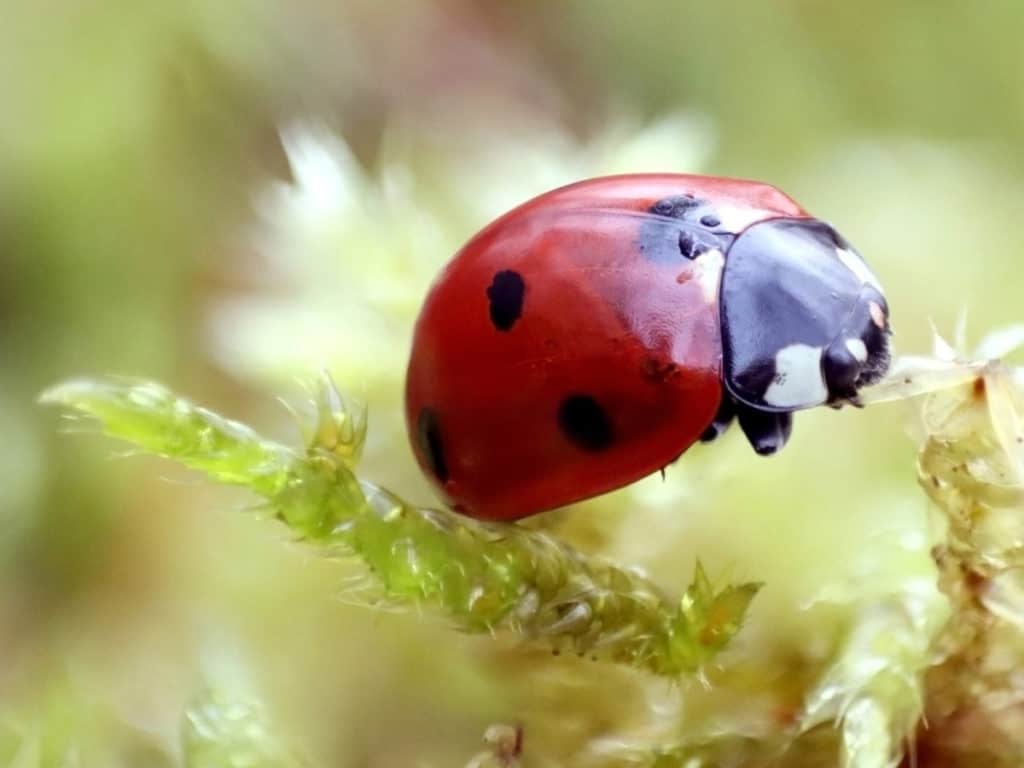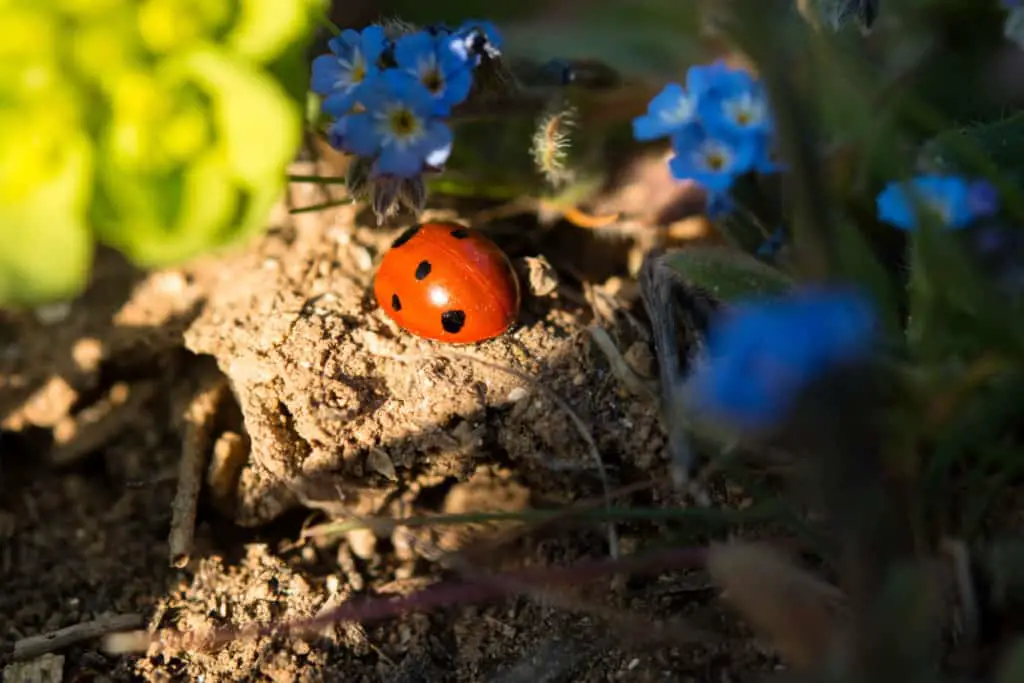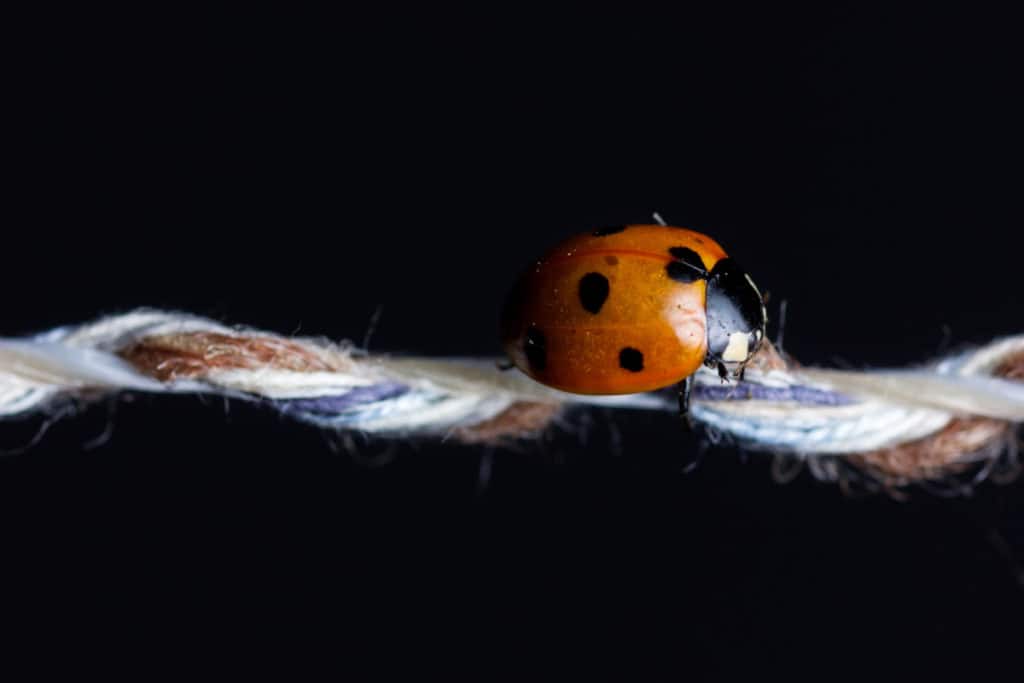There are over 5,000 species of them and their ravenous appetite for insects means they have a special place in farmers’ hearts. The fact that they’re colorful and adorable too doesn’t hurt much either. No wonder we want to know as much about these adorable beetles as possible.
One thing we decided to find out about is their sleeping habits and if they slept at all — all living things are meant to, aren’t they?
Here’s what we’ve discovered about their sleeping habits:
Ladybugs don’t actually sleep. Not as we know it anyway. But they do have their own version of “sleep” where they tuck their little legs in under their bodies remaining still. Sleep for ladybugs tends to happen during the night. This allows them to rejuvenate before hunting for more aphids by day.

But as is often the case with pressing questions, this happens to be one that only leaves a lot more in its wake. Like how long they need to recharge their batteries and their favorite spots for doing so. Or how you can actually tell if one’s wide awake or in ladybug dreamland. Or whether they hibernate and when.
And we cover each of them right here to enable you to top up on your knowledge of one of the most charming little garden dwellers known to homeowners everywhere.
To bring you the most accurate answer of all, we’ve perused expert accounts and even done a little bit of observation in our own gardens and have provided all our findings right here.
Ladybugs And Sleep
One thing most living creatures share in addition to a love of our favorite foods is also a love of snuggling down for a cozy nap.
At the top end of the scale of those who love to sleep the most are cute and cuddly koalas which have been observed enjoying marathon snoozing sessions of 22 hours and giant armadillos which can remain fast asleep for over 18 hours at a stretch.
Pretty close to the bottom are horses, giraffes, and elephants which can make do with three or two hours a night.
And at the very end of the scale are baby dolphins and orcas (they go the first few months of their lives without a comfy nap until they can form enough blubber to keep them sufficiently warm) and bullfrogs which only really sleep when hibernating.
Certain species of birds are pretty capable of doing the impossible: flying when asleep with only half their brains awake.
But Where Do Ladybugs Fall On This Vast Scale?
Well as insects, they belong to that select group of creatures that don’t really snooze in the sense that we understand it. Also included in such a company are fish.
Members of this exclusive little bunch do enjoy some much-needed downtime, the same as everyone else, but have a very different means of going about it: they simply enter into a state of deep rest also referred to as torpor.
During this period, it’s harder to get them to respond to any form of disturbance, unlike bullfrogs which will respond rather promptly whether at rest or not.
What’s more, they do tend to feel unpleasant after-effects of being deprived of their beauty sleep, or rest, in this case.
Insects whose rest periods are disturbed will simply have a much harder time going about their day and getting all their important chores done, compared to those who enjoy a fully rejuvenating session.
So How Can You Tell If An Arthropod Is Enjoying Its Siesta?
Common signs may include a lack of movement or droopy antennae. But there are no real ways of telling for sure. Especially since several of them have different habits: some clamp their jaws on a plant before they nod off, while others such as Monarch butterflies cluster together in groups to huddle together before bedtime.
Ladybugs generally fold their tiny legs under their round shiny bodies, tuck their heads in and drift off. And if you’re lucky enough, you might get to view one of them enjoying a thoroughly rejuvenating rest.
How Long Do Ladybugs Sleep?
The sleeping habits of certain creatures are well documented. We know for example that lions love to catch short naps which add up to a total of almost 20 hours a day. We also know that fruit flies can spend up to half their day ‘fast asleep’.
However, those ladybugs remain a mystery in certain aspects: while we are aware that these glossy-winged beetles retire by nightfall, not much is known about the number of hours they spend ‘snoozing’.
What we do know is that they are early risers and will get out of bed once it’s light to enjoy a day filled with the warmth of sunshine and tasty spider mites.
Why Do Ladybugs Need To Rest Or Sleep?
Keeping a sharp lookout for delectable bugs and for predators such as birds, dragonflies, wasps, and spiders can require loads of energy. And that’s what a typical ladybug’s day consists of.
As has been proven by scientists, even little six-legged guys who miss out on their beauty sleep will find getting through those all-important survival objectives, an uphill task.
Settling down to snooze will not only enable them to make adequate use of the nutrients obtained from tucking into mites all day but will also enable them to recharge their batteries so they will be ready for whatever the following day may bring.
Where Do Ladybugs Sleep?
These miniature beetles put their appetites first in all they do. This means their favorite spots for taking a rest happen to be close to their favorite foods — all the better to ensure they will enjoy a nourishing bite once they awaken.

As a result, ladybugs tend to nest under leaves and beneath or inside logs. Being occasional frugivores, they will also snuggle up close to the fruit as well.
Can You Tell If A Ladybug Is Sleeping?
Generally, a bug in insect dreamland will remain still for a very long time. It will also not respond to stimulus as quickly as it would when awake, either.

Relaxed muscles are also another giveaway as to just how alert an insect is. In the case of these colorful critters, they generally place their legs under their tubby forms and tuck their heads inwards when they intend to call it a day.
Do Ladybugs Hibernate?
Yes, they do. Especially since they have several reasons to. Ladybugs love the warmth and all the delectable many-legged offerings which can be found in spring and summer.
However, come the autumn, diminishing sources of tasty critters and the onset of cold weather means they need somewhere warm, moist and snug to await the arrival of warm weather again.
Popular hibernation hideouts include crevices on doorposts, beneath rotting logs, and inside houses or garages as well.
Finding a shiny beetle or two snuggled up on your window sill might seem a novel experience and a photo-op worthy one at that. That said, discovering huge swarms in your garage or worse still, your lounge is quite another matter.
That might just be what could happen if you do live in a region that is also home to the rapidly producing, hardy Asian ladybugs. This species is especially notorious for invading homes in large clusters to hibernate in — a habit that has earned its members a reputation for being a nuisance in a departure from their reputation as cute, little nature sprites.
If you would like to know more about how this hibernation period fits in with the lifecycle of the ladybug check out this article we have written, How Long Do Ladybugs Live?
When Are Ladybugs Hibernating?
In keeping with their love for mild or warm weather, ladybugs remain especially active during spring and summer. However, as temperatures fall they will be compelled to seek shelter either by nestling beneath bark or snuggling in crevices in homes since low temperatures i.e., below 55 degrees Fahrenheit, will make movement difficult for them.
Hence ladybugs will hibernate at the beginning of winter and will spend those months ensconced in a safe hideout until rising temperatures inform them that spring has arrived once more.
The Wrap Up
You might find them stalking an aphid on a flower stalk, simply taking a leisurely stroll on a leaf, or even helping themselves to a bit of fruit with broken skin.
But in addition to their love for helping themselves to pollen, honeydew, and mites, ladybugs also love to retire just when the sun sets to ensure they’re sufficiently refreshed to face the dawn of a new day.
And while this period of rest might not quite be sleep as we understand it, it pretty much fulfills the same functions.
This keeps the world’s most adorable beetles rejuvenated and on the alert, to get rid of all those pests in our gardens.
Sources
https://cwf-fcf.org/en/resources/encyclopedias/fauna/insects/ladybug-101.html
https://casper.com/blog/animals-sleep/
https://biocontrol.entomology.cornell.edu/predators/ladybeetles.php
https://www.sleep.org/animals-that-sleep-the-least/
http://www.bbc.com/earth/story/20151029-what-is-the-sleepiest-animal-on-earth
https://www.nationalgeographic.com/news/2015/05/150516-insects-sleep-animals-science-health-bees/
